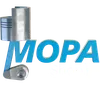OPERATING INSTRUCTION documents and media for diesel and marine engines
Documents and media are a critical component class that turns complex engines into safe, efficient, and maintainable assets. This category includes the full spectrum of technical literature and data carriers—service manuals, parts catalogs, wiring diagrams, calibration files, training media, and compliance certificates—structured around a precise OPERATING INSTRUCTION. For a diesel engine or marine engine, these resources translate engineering intent into daily practice, ensuring that every start-up, inspection, and overhaul follows the right method and specification.
Beyond explaining “how,” Documents and media define “what” and “why”: torque values, clearances, material specs, consumables, troubleshooting trees, and acceptance criteria. With access to the correct, version-controlled OPERATING INSTRUCTION set, shipowners and technical buyers can align crews, yards, and service partners, reduce downtime, and sustain performance across the engine’s life cycle.
OPERATING INSTRUCTION Documents and media: technical function in diesel and marine applications
An OPERATING INSTRUCTION for a marine engine establishes end-to-end procedures: commissioning, running-in, load changes, alarm response, lay-up, and reactivation. It standardizes safety steps, lockout/tagout references, and instrumentation checks while linking to maintenance tasks and intervals. For a diesel engine in propulsion or genset duty, the OPERATING INSTRUCTION diesel engine package guides lube oil selection (viscosity, BN, ash), coolant treatment (glycol ratio, nitrite/silicate), filter change-outs, and cleanliness classes for fuel and hydraulic circuits.
Documents and media also provide the data backbone for quality maintenance: tightening sequences and torque-angle values for cylinder head studs, liner protrusion specifications, bearing crush and clearance tables, injector nozzle and pump timing settings, turbocharger inspection limits, and vibration or exhaust temperature thresholds. Digital media can include ECU parameter sets, calibration change logs, and firmware release notes, ensuring the control system executes to design. Parts catalogs and exploded views connect procedures to the exact items and quantities, while service bulletins capture continuous product improvements. In short, Documents and media ensure that the intended outcome of each task—performance, efficiency, and safety—is repeatable.
- · Version-controlled manuals, bulletins, and data sheets
- · Torque specs, clearances, and tightening sequences
- · ECU firmware notes, calibration files, and parameter sets
- · Wiring diagrams, P&IDs, and hydraulic schematics
- · Parts catalogs with serial-number-specific exploded views
- · Safety guidance, risk assessments, and LOTO steps
- · Class and compliance documentation for marine engine operation
- · Digital and physical media: PDF, 3D, CSV, USB/SD kits
Importance of Documents and media for engine reliability, service life, and safety
Accurate Documents and media are directly tied to reliability. Incorrect or missing instructions can lead to over-torque or under-torque of critical fasteners, head gasket failures, liner fretting from improper protrusion, or bearing distress from incorrect crush values. Misapplied coolant chemistry accelerates corrosion and cavitation; wrong fuel rack settings or timing adjustments elevate cylinder pressures, turbocharger speed, and EGT, increasing wear and fuel consumption. Without current alarm thresholds and diagnostic steps, crews may miss early indicators of lube starvation, injector dribble, or charge-air fouling.
Outdated or damaged media—illegible prints, corrupted files, or obsolete ECU parameter packs—cause rework and delays. In marine contexts, that translates into schedule disruptions, higher OPEX, and risk to class compliance. Incomplete documentation complicates root-cause analysis after incidents, making it harder to restore engines to stable baseline conditions and shortening time between overhauls. Keeping Documents and media current is therefore not administrative overhead; it is a primary control for uptime, service life, and safe operation.
Advantages of OEM spare parts suitable for Documents and media
OEM spare parts suitable for Documents and media ensure that the procedures described in an OPERATING INSTRUCTION OEM parts context deliver their intended results. The technical data in manuals—torque values, clearances, material pairings, and calibration limits—are written against specific designs and tolerances. When components conform to those same specifications, the documented method produces predictable outcomes: proper sealing, correct timing, stable emissions, and optimal fuel efficiency.
For buyers, this alignment protects budget and asset value. Parts that match the documented dimensions and materials reduce rework, minimize fitting adjustments, and keep overhaul times on plan. They help maintain SFOC targets, emissions compliance, and vibration limits, which directly impacts operating cost and regulatory standing. Across a fleet, consistent use of OEM spare parts suitable for Documents and media simplifies stockkeeping, training, and quality audits because crews can trust that the documented step leads to the expected result.
OPERATING INSTRUCTION OEM parts alignment with procedures
From gasket thickness that achieves the specified liner protrusion, to sensor ranges that match calibration tables, to turbo components balanced to the class defined in the manual, the linkage between documentation and the actual hardware is essential. This is where the OPERATING INSTRUCTION for a marine engine or diesel engine delivers its full value—when the listed part, the measured clearance, and the programmed parameter all match.
MOPA as your partner for OEM spare parts and Documents and media
MOPA is an experienced partner for OEM spare parts and the associated Documents and media packages your teams rely on. We provide fast access to the correct document revisions, data packs, and service bulletins tied to engine model and serial number—together with the OEM parts that the procedures specify. Our processes emphasize speed, quality, and security in the trade of OEM parts for diesel and gas engines, including traceability and safe logistics for digital and physical media.
Whether you need a complete OPERATING INSTRUCTION diesel engine set for a major overhaul, updated ECU parameters after a service bulletin, or a parts bundle aligned to a specific procedure, MOPA streamlines sourcing and delivery so your project proceeds without interruption.
Conclusion: the role of Documents and media in engine performance
Documents and media anchored by a robust OPERATING INSTRUCTION are foundational to safe, efficient, and compliant engine operation. Keeping them current—and pairing procedures with OEM spare parts suitable for Documents and media—preserves performance, reliability, budget control, and service life. With MOPA, you gain a responsive partner to source the right documentation and OEM parts, delivered with speed, quality, and security.

